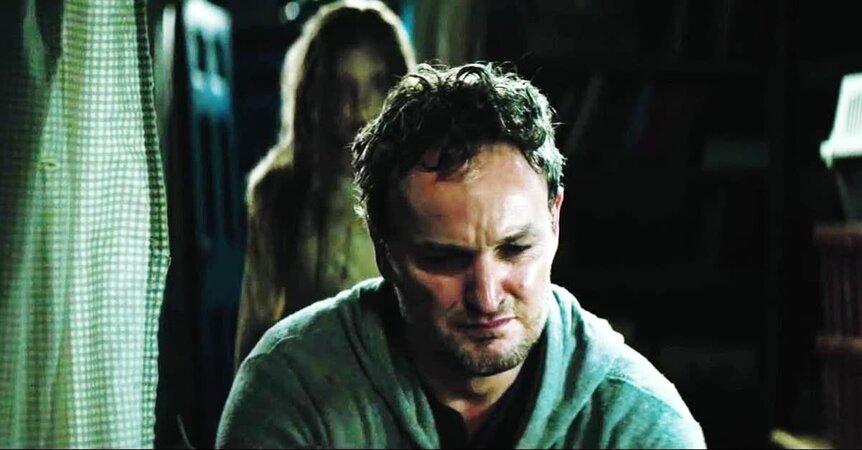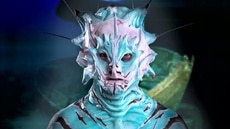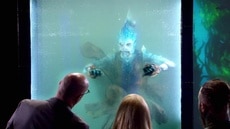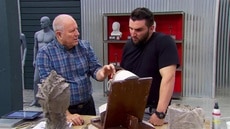Create a free profile to get unlimited access to exclusive videos, sweepstakes, and more!
The Pet Sematary screenwriter explains why they made those big changes
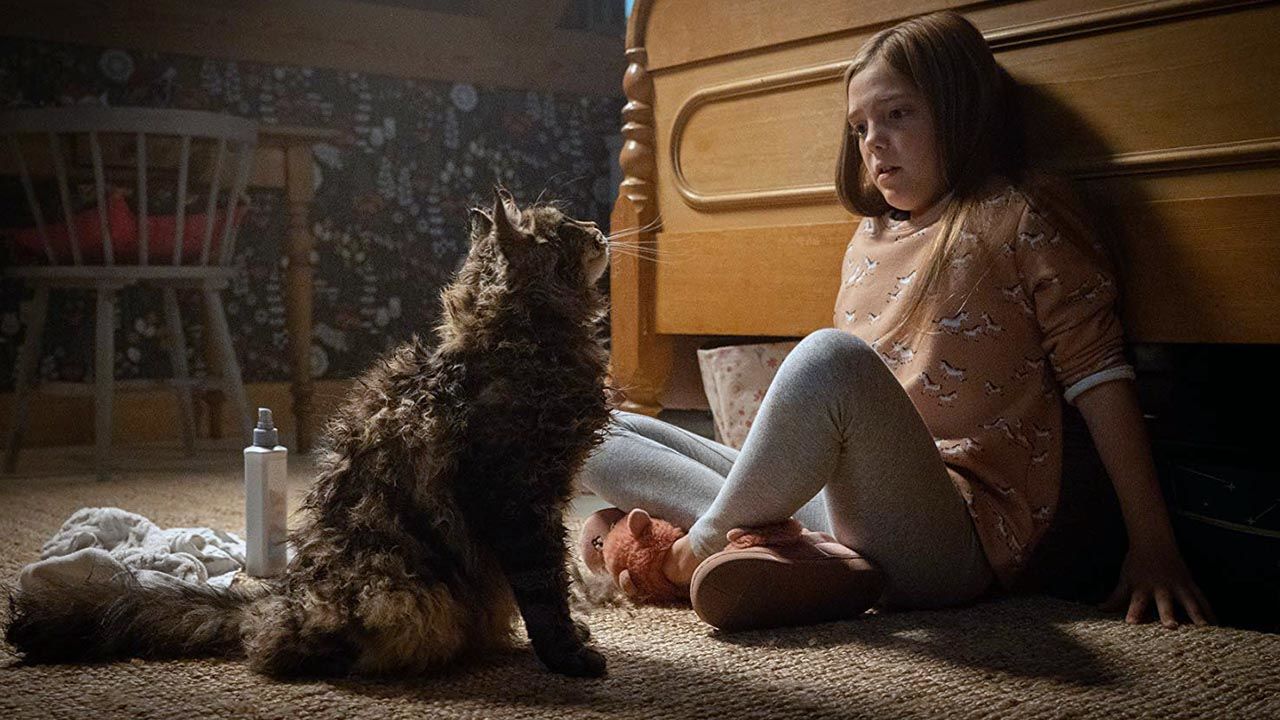
Another day, another Stephen King adaptation has hit theaters. This time around, Pet Sematary — the author's iconic 1983 novel, which explores how trauma and grief can infect the tapestry of a family unit — has been reimagined.
It's been 30 years since audiences first witnessed how a little sour soil can bring dead animals back from the dead. Dennis Widmyer and Kevin Kolsch, the co-directing team behind the 2014 genre festival hit Starry Eyes, helmed the new take on the story, which once again follows the Creed family as they move out to the country only to face death head-on and answer the very important question: What if we could bring our loved ones back from the dead?
**Spoiler Warning: The following contains major spoilers for the new Pet Sematary!**
Creepy cats and frightening kids are tropes that Stephen King fans are quite familiar with, and both are here in full force. However, this is not a strict remake. Fans across the Internet voiced their excitement/outrage once the original trailer was released, revealing that young Gage (Hugo Lavoie) isn't the unfortunate victim this time around. Instead, it's Ellie Creed (Jete Lawrence) who dies in the road, sending Louis Creed (Jason Clarke) and his family down a dark and bloody grief-filled road.
To get further insight on the challenges in bringing an iconic Stephen King story to the big screen, SYFY WIRE spoke with the movie's screenwriter, Jeff Buhler (Nightflyers, Midnight Meat Train) about the film's bold choices — and the emotional resonance this story still has after all these years.
Pet Sematary is so immersed in trauma and grief, told through the eyes of the Creed family's patriarch. From one father to another, I have to wonder: Was it emotionally challenging to adapt this story?
Yeah, I mean, it's so strange to approach this story as a parent. I, of course, first was introduced to it as an avid horror fan... I was a teenage Stephen King freak who read every book when they came out in hardback. I didn't even wait for the paperback! I had to have every book the minute they came out and I just devoured them.
And also, I love horror movies in general. I just was a fan. So you digest and experience films in a different way when you're younger before you have kids. And then when I was approached to work on Pet Sematary, I was, first of all, blown away! Because I'm a huge fan of Stephen King. I had the honor of adapting a Clive Barker story [2008's Midnight Meat Train, starring Bradley Cooper] And I worked on George R.R. Martin material [SYFY's Nightflyers series] so I was kind of like, Oh my God! This is incredible!
That's an appropriate response.
I was so overwhelmed by the opportunity that it didn't really sink in what the task at hand was until I started digging back into the book and Stephen King's screenplay for the Mary Lambert film. I really started to digest the approach to the story that was taken before the underlying material and thinking about the film. It was really, really hard and really emotional, as a father to write a story about a father who loses a child and all that it does to the family and, just the emotional impact of it.
From the very beginning, my approach was to treat grief and loss as the monster in this film. And it allowed us to activate not just Louis's point of view, but to bring Rachel (Amy Seimetz) more actively into the story and to elevate some of the relationships between the kids and, obviously, the now infamous switcheroo that was already in place in a previous draft, written by a wonderful writer Matt Greenberg.
You beat me to the punch. Let's talk about that infamous switcheroo. Was it the studio's idea to save Gage from certain death this time around? Is this a safer choice?
You gotta remember that this film has been in development for, like, almost 10 years. The producer, Lorenzo di Bonaventura, is an extremely experienced filmmaker. And he worked previously with Matt Greenberg on 1408, which is another successful Stephen King adaptation, albeit from a piece of material that was less known, maybe slightly less precious to fans.
And I know just having come into this process, maybe five years ago, back when I started my work on it, many conversations had already taken place about Gage versus Ellie. And I don't think it's fair to boil it down to one idea, or especially to put it in the framework of the big bad studio saying "we want to do this because we don't want to kill little kids."
When you see the film, you'll realize that the studio allowed Dennis and Kevin, our directors, to take many, many risks, and many, many choices that your typical film studio would shy away from in a second. It's really hard to paint the picture that they were shying away from something they felt would be too controversial. I think there's certainly a producorial element to the choice, which is: It gets difficult with a toddler to shoot realistic action sequences — you have to use a doll.
Also, we have to remember that Pet Sematary, in a sense, is a victim of its own success. The movie is so well known and sort of set the template for "little kid with a knife" movies. And so the idea of going back to that trope of a little child running around and, you know, spewing one-liners feels very dated, it doesn't feel as emotional.
It also sort of deflates the deep psychological terror of the story, too.
When I came on board, that potential change had been discussed on many different lines. And my initial reaction was the fan reaction. The Stephen King fan inside of me said, Oh, you can't do it! It has to be Gage, how could you possibly do that? And then I started thinking about it as a screenwriter; I started thinking about it as a father; and I started thinking about it in the context of the story and it started to make sense.
It took like 24 hours to sink in on me. And then it took about a week to really get into my blood. Then I came back and was like, we have to do this, it's so good. It works so well. And then we really worked hard on the relationship Ellie has with her father and mother, both of her parents, it's so based in this question of, what happens after that? This is all sort of catalyzed by [the death of] Church and finding this pet cemetery behind the house … These are all things that happened to Stephen King! You know, his cat was hit by a car and he had to have that conversation with his kids, and everyone's had that conversation.
It's tough to do that with a three-year-old. It's tough to get deep into those conversations and really explore the emotional elements of it. It also gave us more to play with during the second half of the film, when things get really dark. Because we have that level of sophistication that an older child can achieve, rather than a younger child. I would say there were many factors that went into it. But once we started really shaping the story that is represented in the film now, it became very clear that this was the right choice.
And to get that approval from Stephen King must've been something.
Yeah! Even before we started filming, when Stephen King took an early look at the script, he was very complimentary about the approach to the family. The feedback I got was that he was very pleased that we were focusing the story on the psychology of the family, and he supports, as has been widely reported, the switch. He is, I think, happy to see the spirit of the story, the journey of this family, remain intact. I mean, what the book is about is there. We haven't changed what the story is, we just made some adjustments to make the film work better.
Mary Lambert's movie is iconic in many ways. The original novel is a bonafide Stephen King classic. How challenging was it to go in and give your spin on it?
For me, just as a screenwriter, I grew up with the book first. And then when I saw the movie, which came out not too long after the book. So the book and the movie — the Mary Lambert film — are kind of intertwined.
When I rewatch that film, I absolutely adore it and have many nostalgic feelings for it. But they're all sort of rooted in this time and place that that film was made. I think the tone of the film has certain campy elements that fit perfectly in the '80s when horror was in this incredible renaissance. And it was incredibly sophisticated for that time period. Remember, there were a lot of movies coming out around that time, you know, with teenagers wearing their underwear being chased by chainsaws and machetes. So it felt like, you know, this was Tolstoy or something.
Or Hemingway, maybe?
I think horror audiences have grown up. I think movie audiences, in general, have become more sophisticated. They're more demanding. They were more familiar with some of these cliches that used to be very easy to get away with. So you have to spend a little bit more time easing into the thematic side, as well as the characters, to really make things effective.
I also think there's a great sort of renaissance going on right now of sophisticated horror, or as people call it: "elevated." Well, call it whatever you want. I mean, it's just what I would call grounded, character-driven horror that has a sense of realism to it. I think that's where this movie lands, and that's what sets it apart from the first one. So when I went back and rewatched the first movie, I thought, I love that movie... But we're not going to do that. We can't do that. It wouldn't work today. But, you know, I love it for what it is.
And then, of course, the book is massive. It takes place almost entirely inside Louis's head and has a lot of things that we can't fit into a single movie. You can do a dozen movies based on that book, there are so many side stories and chapters about other characters and things going on. You know, we had to really pick and choose the things that were the foundation of the story, the spirit of the story, and really kind of lean into those.
One of the aspects from the book and original movie you definitely lean into is Rachel's sister Zelda. The original movie painted Zelda as such a monster. Did you find, as a screenwriter, that you had any sort of responsibility in representing what it's really like to suffer from Spinal Meningitis? You know, to more-so humanize the experience?
What we are representing are the memories of Rachel Creed, when she was a child, of her sister who was sick. So it's less about the representation or the realism of the disease itself, as much as it is the way that trauma grows in someone's mind over the years. As a child, she carried this secret with her and she carries a lot of guilt with her, it's sort of a survivor's guilt that she was not saved, that her body was not twisted. And so what we're seeing are really those memories from Rachel's past that become sort of twisted in her mind. And so that gives you a little bit of poetic license to really push the horrific elements of it.
What Stephen King does so well is introduce all these characters, they all have their own baggage and then you put them in a place that activates those demons and all of this stuff comes to life. What's really fun about this version of Pet Sematary is that each character has their own thing that is coming to life: Jud (John Lithgow), Rachel, Louis, obviously, Ellie, in her own way … they all have things that they bring into this environment which get activated by the force that lives in those woods.
It's a really fun way to have more than one scary element in a film while it all still feels like it fits into the sort of same supernatural mythology.
